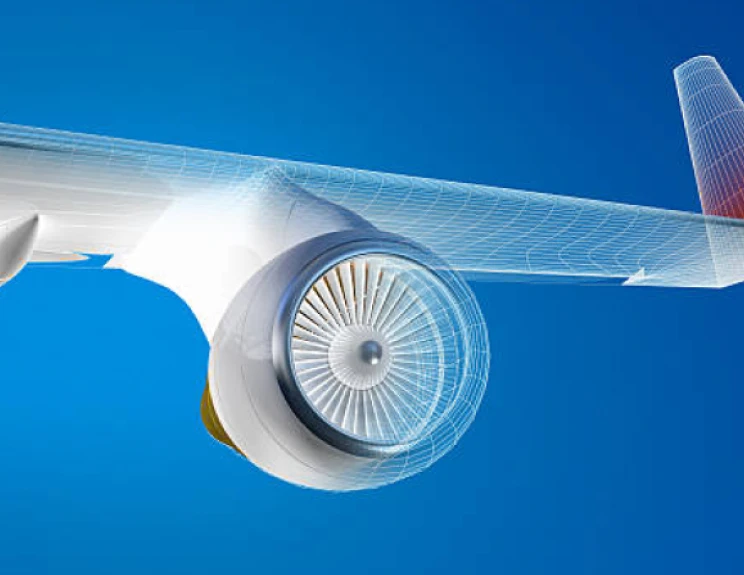
Six Pillars of Modern Supply Chain Management
Supply chain management (SCM) has undergone profound changes, reflecting the progression of industrial revolutions. Historically, supply chains were linear, rigid, labor-intensive, heavily dependent on manual processes and limited by geographical and technological constraints. Early supply chains prioritized production efficiency and cost minimization, often at the expense of flexibility and customer responsiveness.
In contrast, today’s supply chains are dynamic, data-driven ecosystems shaped by rapid technological advancements and increasing market complexity. The modern SCM model is defined by six key pillars that form the foundation for a more connected, intelligent, and responsive network.
- Digital Transformation: AI, IoT, blockchain, and cloud computing are reshaping SCM—automating tasks, enhancing visibility, and enabling data-informed decisions at scale.
- Supply Chain Visibility: Real-time data and analytics empower businesses to monitor inventory, predict demand, and respond proactively to disruptions—making operations more agile and efficient.
- Collaborative Networks: Stronger partnerships among suppliers, manufacturers, and customers increase transparency, coordination, and shared value across the supply chain.
- Agility and Resilience: In a world of fast-changing customer demands and global uncertainties, flexibility and risk-readiness are now essential capabilities.
- Customer-Centricity: Modern supply chains are driven by customer expectations—prioritizing personalization, speed, and service through deep insight integration.
- Sustainability: Responsible sourcing, waste reduction, and ethical practices are not only expectations but key differentiators in today’s market.
.webp?modified=20250903081241)
The AI Revolution in Modern Supply Chains
Among these six pillars, AI plays a transformative, cross-cutting role. It is no longer just an emerging tool—it is becoming a fundamental driver of end-to-end supply chain modernization. The integration of AI into supply chains is accelerating at an unprecedented pace and scale, permeating multiple organizational departments simultaneously. AI significantly reshapes supply chains by transforming three core functions: resources, processes, and people.
- Resources: AI enables precise inventory management and optimal resource allocation by accurately forecasting demand and supply fluctuations through sophisticated predictive analytics.
- Processes within the supply chain are streamlined and automated with AI-driven tools such as robotic process automation (RPA), intelligent routing systems, and automated quality inspections, significantly reducing operational bottlenecks and increasing efficiency.
- People: The impact on human roles is particularly transformative—employees transition from routine, operational tasks to roles emphasizing strategic oversight, analytical decision-making, and collaboration with intelligent systems. This shift demands new skills and continuous upskilling, reshaping organizational structures and necessitating robust change management practices.
.webp?modified=20250903081523)
Enterprises must approach AI integration strategically—grounding adoption in realistic use cases and gradual implementation.
APAC Supply Chain: Opportunities and Threats
The APAC region is not only a hub for global production and logistics—it is a critical frontier for AI-driven supply chain innovation. With 44.59% of the global logistics market share in 2024 (USD 4.56 trillion), projected to reach USD 8.28 trillion by 2034, the region is poised for immense transformation. Yet, each APAC economy brings unique strengths and challenges:
- In China, despite significant investments in digital infrastructure—including AI, blockchain, IoT, and clean-energy logistics—fragmented legacy systems and regulatory barriers continue to limit end-to-end visibility across domestic and global value chains. China's pursuit of technological self-sufficiency through initiatives such as “Made in China 2025” accelerates automation and predictive capabilities but introduces complexities due to export controls and data governance issues.
- South Korea, a global leader in semiconductor manufacturing—accounting for approximately 60% of the global memory chip market—is driving AI adoption in supply chains through initiatives like the USD 7.5 billion “AI Autonomous Manufacturing” launched in 2024. This initiative enhances predictive maintenance and smart logistics, although evolving AI regulations and skill shortages pose ongoing integration challenges.
- Japan's recent semiconductor resurgence, particularly through the Rapidus’ 2nm project, significantly enhances localized production capabilities. However, this creates additional complexity within existing supply networks. Japan’s innovation-friendly regulatory approach to AI, however, remains underdeveloped in terms of comprehensive ethical frameworks and risk management protocols.
- Vietnam is rapidly emerging as a strategic hub in the global supply chain—powered by innovation. The country’s logistics sector is projected to reach USD 52.06 billion by 2025, contributing over 5% to the national GDP in 2024. This growth is fueled not only by infrastructure upgrades and export momentum, but also by a strong push in technology and innovation, particularly in AI and semiconductor development. Although a newcomer in semiconductors, Vietnam is quickly gaining ground. FPT Semiconductor became the first Vietnamese company to design commercial chips, securing orders for 70 million units from markets like Japan, South Korea, and Taiwan. At the same time, Vietnam is accelerating AI adoption to modernize its logistics and manufacturing capabilities. The launch of FPT’s AI-first platform, FleziPT, is a key milestone—empowering industries with predictive analytics, real-time logistics visibility, and automation.
How can APAC leaders navigate the modern supply chain management?
Successfully modernizing the supply chain with AI in the APAC region requires more than technology—it demands strategic alignment, local adaptation, and organizational readiness. Here’s how businesses in APAC can navigate this journey:
.webp?modified=20250903081548)
This means actively involving both senior management and operational business users when selecting and implementing supply chain solutions. Gaining perspectives from across the organization ensures that transformation efforts are grounded in actual operational pain points and strategic business objectives. Engaging cross-functional teams not only improves buy-in but also surfaces diverse insights that are critical in shaping a solution that is both effective and adaptable to local business practices.
.webp?modified=20250903081711)
Rather than striving for flawless execution in the first implementation, businesses should adopt an iterative approach—testing solutions in phases, learning from early-stage deployments, and scaling gradually. This mindset allows organizations to absorb minor failures without significant financial impact, transforming them into learning opportunities. To facilitate this, enterprises should allocate dedicated innovation budgets, establish clear risk mitigation plans, and implement performance metrics that reward experimentation. By planning for measured failure, businesses cultivate a culture of resilience and continuous improvement, which is essential in navigating the complexities of AI integration in dynamic APAC markets.
.webp?modified=20250903081735)
Customized AI-driven supply chain solutions, sensitive to local market characteristics, regulatory frameworks, and consumer preferences, will provide enterprises with the agility and resilience needed to thrive amid rapid digital transformation. This customization must go beyond mere language or interface adaptation; it requires a deep understanding of the operational realities, customer behaviors, and compliance environments unique to each locale. To effectively address these nuances, enterprises should consider modular solution designs, allowing them to adapt technology components to different market conditions.
AI as a Competitive Imperative
AI is not a quick fix—it is a strategic enabler for building a future-ready supply chain. In APAC, where diversity and scale intersect, businesses that move with intention—grounded in data, informed by local insight, and supported by adaptive processes—will lead the next wave of supply chain transformation.
Ready to transform your supply chain? Explore how FPT’s logistics solutions can drive efficiency, agility, and innovation.






























